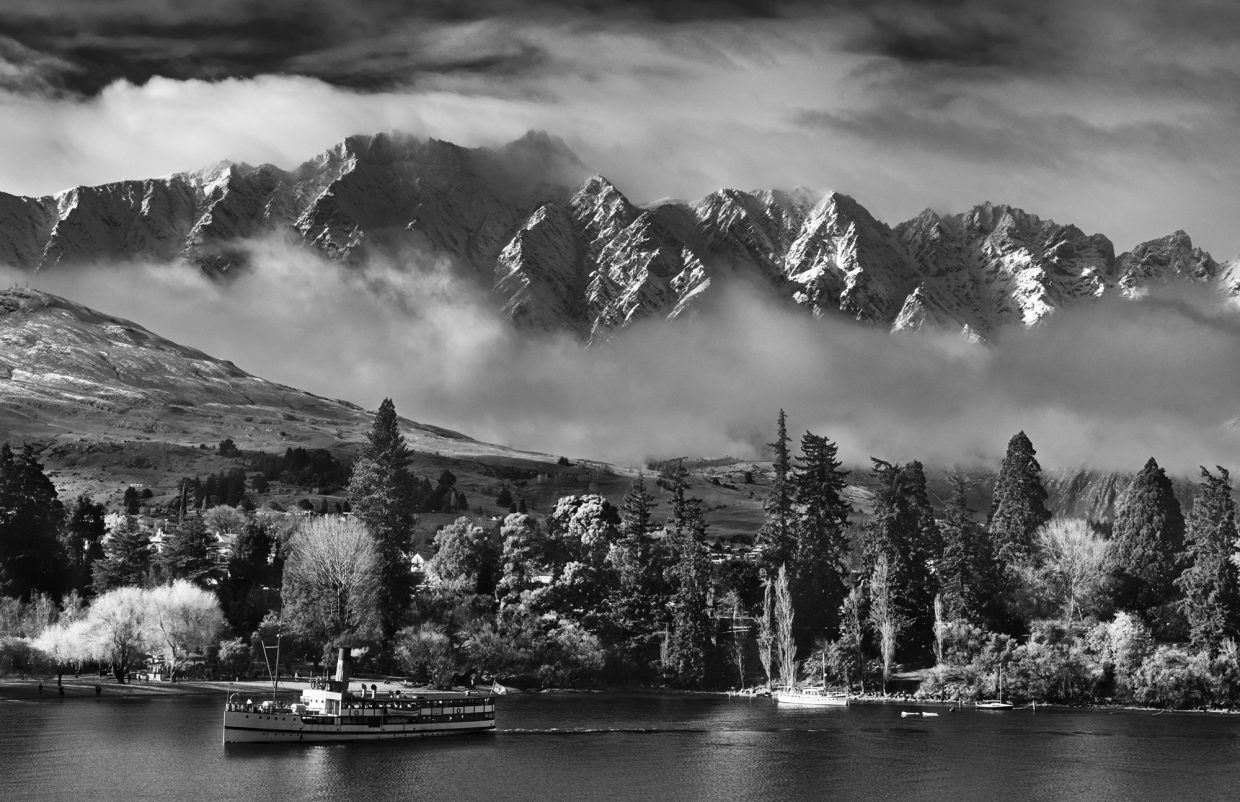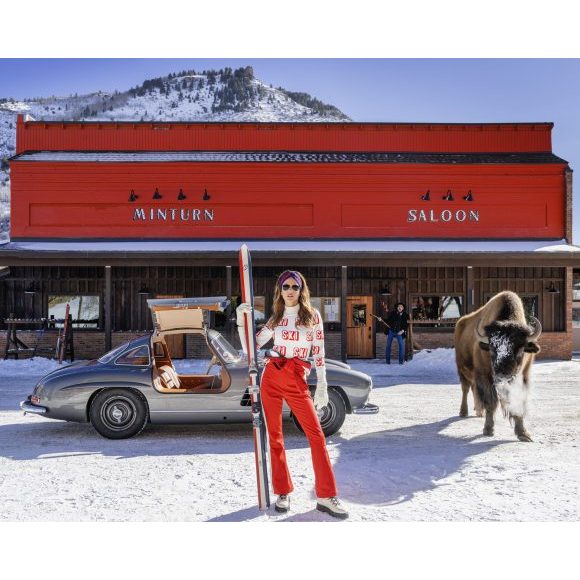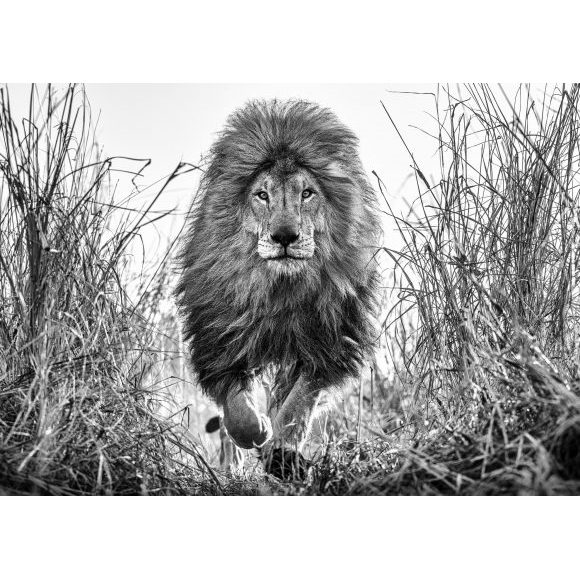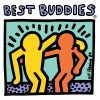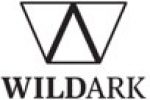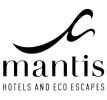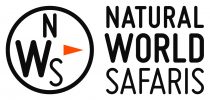Letter From Auckland

May 2018 was an important month for the brand evolution of David Yarrow Photography. The TAG Heuer campaign I shot with Cara Delevingne was released across the world and in the same week Sotheby’s London sold my photograph 78 Degrees North for a record price of just over £81,000. I could never have imagined either of these events a couple of years ago and as I say to everyone that asks - it has taken 36 years to get here. I could be accused of taking my time.
We also opened at the famous MAMM museum in Moscow in May and over 35,000 visitors attended the exhibition. We finished the month with a week- long speaking tour of New Zealand in theatres packed with over 3,000 people across four events in Wellington, Christchurch and Auckland. In between times, we managed to fit in a week in the sweltering heat of Rajasthan, India - trying to get our cameras as close as possible to Bengal Tigers. It’s been full on and I have not spent two consecutive nights in my London home for three months now.
Raising awareness and raising money for good causes are leading goals of David Yarrow Photography. They offer focus to our work ethic and provide an effective means of giving back. The recent rise in the pricing power of the brand, coupled with our tight edition sizes, has presented a fantastic opportunity to really leverage the industry leading position of the content and raise material sums of money for wildlife conservation, medical research, education and underprivileged communities.
In 2017, a total of $1.4m was raised for charity from the auction of David Yarrow prints - up almost 100% from 2016. But the recent successes of auctions at Sotheby's in New York and London, coupled with the acclaim generated from the launch of the TAG Heuer campaign, have increased the potential to make a difference through print donations to carefully selected charities. In May 2018 alone - following auctions in London, New York, Hong Kong, Auckland and most recently in Moscow - $560,000 has been raised from the sale of my work for conservation and education in Africa. That is certainly the highlight of the month.
Friends remind me to enjoy these times - and that I will do - but in my mindset, tomorrow is more important than yesterday, and my focus is to make sure that we move forward from here and not see May 2018 as the summit.
We have paused briefly and taken stock of how far we have come. But the opportunities that are now opening up in the original content arena are growing by the day and this is no time to be sitting on a beach
I knew as soon as I was back at our camp, north of Pretoria in South Africa, that the photograph I had taken an hour earlier of Cara Delevingne was beyond spectacular. It sent shivers down my spine unlike any picture I had ever taken. It was one of the last shots of the day and she was already in a car on her way back to Johannesburg by the time it was on my computer. But with modern technology that was no issue and a low-resolution file was emailed. Everyone in the crew, including Cara, was ecstatic. For many weeks all parties involved had been looking forward to the unveiling of the image to the world - and finally in May 2018, the campaign was launched.
I have probably taken four big photographs in my life. Mankind, The Wolf of Main Street, 78 Degrees North and then this image. It would be heart wrenching to be asked to give up any of these, but if I was forced by some evil witch to lose three of these images and keep just the one - I would hold on to Cara and the lion. It is that good and I think it will serve the test of time. The reaction around the world over the last three weeks has confirmed this premise. It is the most important image I have taken, and the most intoxicating. Many people have commented that it is also their favourite ever image of Cara and, given her stature in the world and the number of times she is photographed, that is instructive.
"It is the most important image I have taken, and the most intoxicating. "
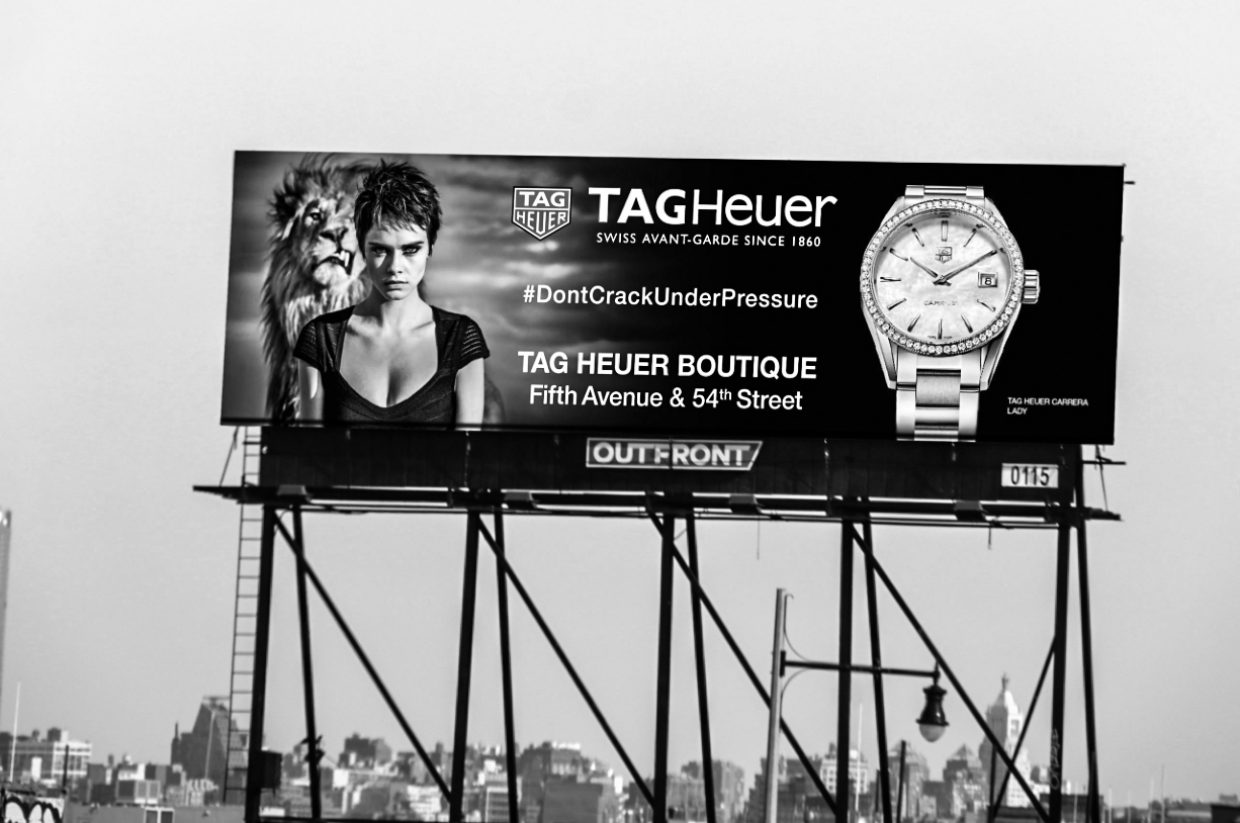
Great images tend to have two key attributes. Firstly, they can never be taken again (an issue with some landscape works) and secondly, they can be looked at for a very long time (an issue with a great deal of sports photography). I have danced on the edges of both these genres and never found myself in my true comfort zone. I have met some iconic sports photographers around the world over the last 30 years and I have huge admiration for their skill sets and equally I have great respect for those landscape photographers whose genius has forged a pivotal role in the history of photography - Ansel Adams for example. I borrow quotes from him the whole time and from an early age he has had a material influence on me.
But I think I have found my niche and my comfort zone and the Cara image rams that home. I make pictures, I don't take them, and that is core to the style of my photography. Authenticity is a driving emotion in all that I do. Without originality, I have no game. As soon as TAG Heuer gave me the assignment, I knew where to shoot and how to shoot it. Kevin Richardson - the Lion Whisperer - and I were immediately throwing ideas back and forth as to how on earth we could create this image.
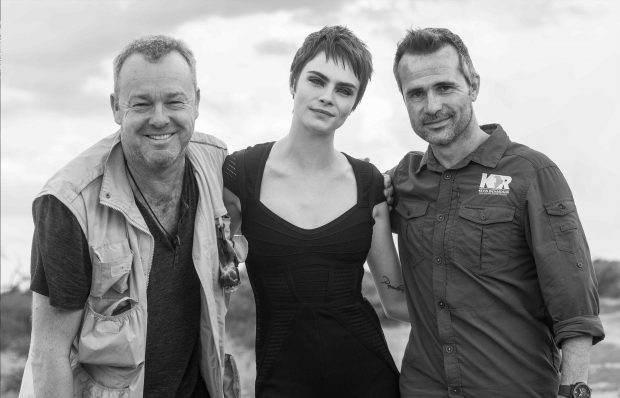
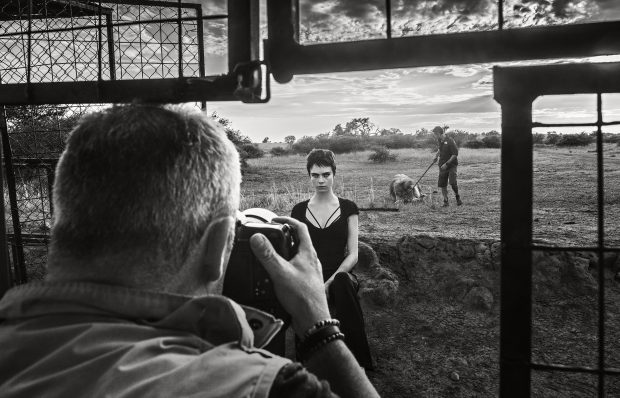
Kevin is a close friend and I am proud to be an Ambassador to his foundation. He knows more about lions than anyone else I have ever met and conducts his business in the most ethical of ways. Clearly much of the discussion revolved around Cara’s safety and it was left to me to consider camera mathematics given the position of the various cages for Cara and I. I knew the camera and lens I would use long before I landed in Johannesburg. The image was already in my head - it was just never as good as the reality.
The illusion became the reality. The global campaign was released when my team and I were in Russia and whilst a flood of pictures of billboards were sent to us by friends from airports and cities around the world, we could not find one in Moscow and we actually had to wait until Auckland, New Zealand to see it live. The image is made by Cara not me, and she has earned her place at the top of the tree in 2018. She is a British icon and we should treasure her.
When I was invited on a speaking tour of New Zealand by one of the country’s most established financial institutions, I decided there were a few reasons to bite their hand off.
Firstly, I had never been to the country, and given the amount of times I have visited other visually intoxicating countries - such as Iceland, Chile and Namibia, this seemed an anomaly in need of correction. I was only too aware from contacts in LA as to how New Zealand was winning more and more film location work. Lord of the Rings and The Hobbit are not really my thing, but equally I knew that Peter Jackson had inspired a whole new industry in Wellington or as some now call it “Wellywood”. James Cameron, of course, followed Jackson and the country’s reputation as the lead visual accomplish to story tellers was secured.
Secondly, I had heard that New Zealand punched above its small economic weight in entrepreneurial spirit and I wanted to understand a little more about this dynamic as I was also aware of the reserved and conservative nature of towns like Christchurch. It seemed remarkable to me, given the perpetual brain drain issue in New Zealand whereby so many of those with commercial ambition leave, that there is anything of real note left behind.
Thirdly, if it was agreed that any monies raised on this tour would all go to a conservation body of my choice, I was hopeful that we could do something meaningful for an NGO with strong Antipodean connections.
Finally, and self-indulgently, a night after night speaking tour in front of big theatre audiences forces necessary introspection as to what actually differentiates your art and your brand.
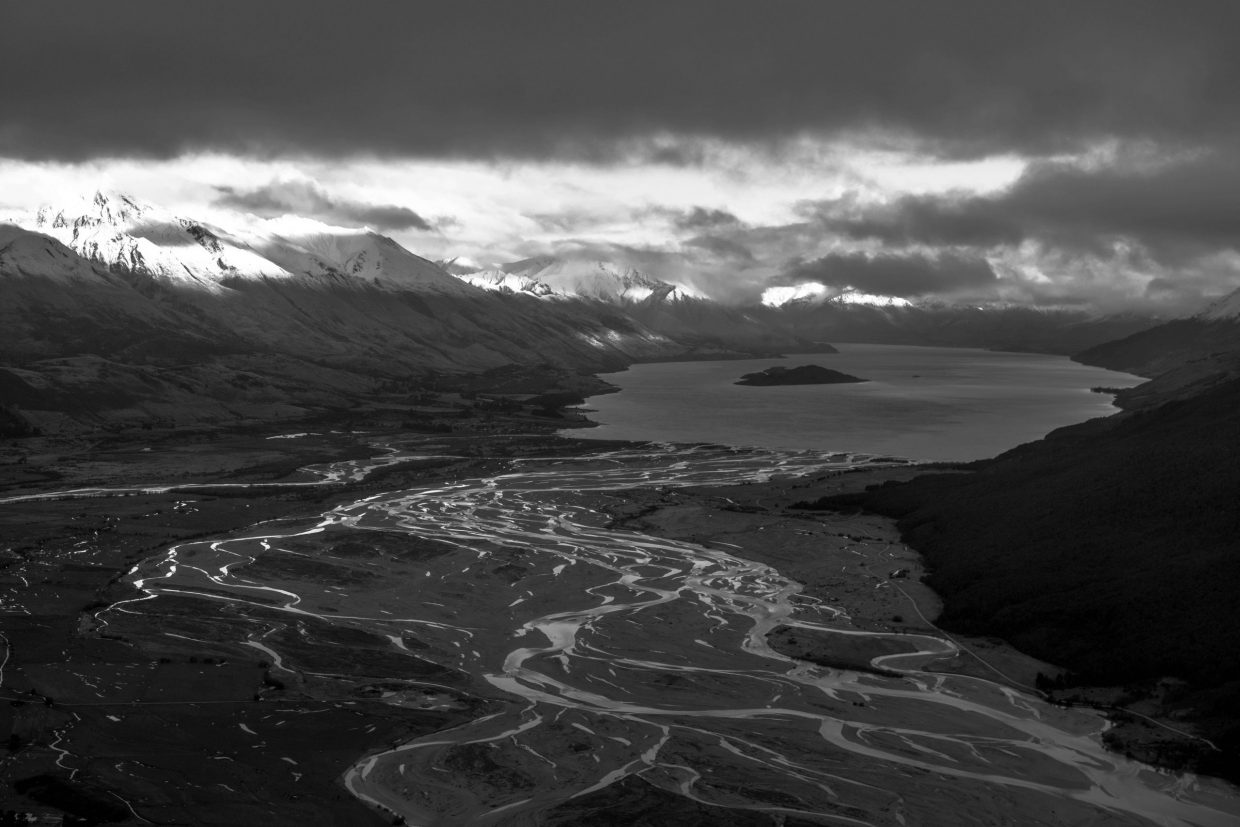
In my week in the country I was able to learn a little about New Zealand and its people and left feeling better equipped to answer some questions. Equally, I know that I have barely scratched the surface in terms of immersing myself in the majesty of the scenery.
Queenstown is unlike any ski town in the world - in part because it is at the end of the world. With the greatest respect to Invercargill, go south from Queenstown and you are done until Antarctica. This is no Aspen or Gstaad - take the wrong road out of town and you either fall off earth or get eaten by hobbits.
The resort attracts cable car loads of British kids on their gap year who like to hang out, wear woolly jumpers, smoke some weed and go bungee jumping. Then at the same time, it hosts hordes of socially aspirational Asian tourists who want to survive “Middle Earth”. It’s an unusual cocktail for sure and explains why there is a shiny LVMH store next to the dodgy Irish pubs serving cheap beer and fast food. I can’t really think of any other resort destination where the juxtaposition is as stark - at least in the Austrian Alps there are transition zones where the smell of cheap beer and skunk gently morphs into the smell of a new designer leather handbags.
But the visual disquiet does not stop there - it is the landscape that is the real double take. I have seen many locations in my life that have power, charm or beauty. But Queenstown at first sight is difficult to accept visually - it is that much of an outlier. "The Remarkables" (the aptly named mountains behind the town) rise so fiercely from the fjord below that a ring fenced amphitheatre was created in Middle Earth. This part of South Island is like a squashed Switzerland.
After Queenstown, it is perhaps unsurprising that I found most other cities characterised by being unremarkable. Wellington seemed like a safe - but small - Cape Town and Christchurch still has to be fully rebuilt physically and emotionally following the earthquake of February 2011 that, as well as killing 185 people, destroyed 95% of the CBD. I spoke at the main Theatre in Christchurch - The Isaac - and that was a truly memorable and humbling experience - it was really the only building of note left standing in central Christchurch. Fortunately, most earthquakes tend to have their epicentre at sea or in areas of low population density. Not so in Christchurch, the epicentre was the city centre.
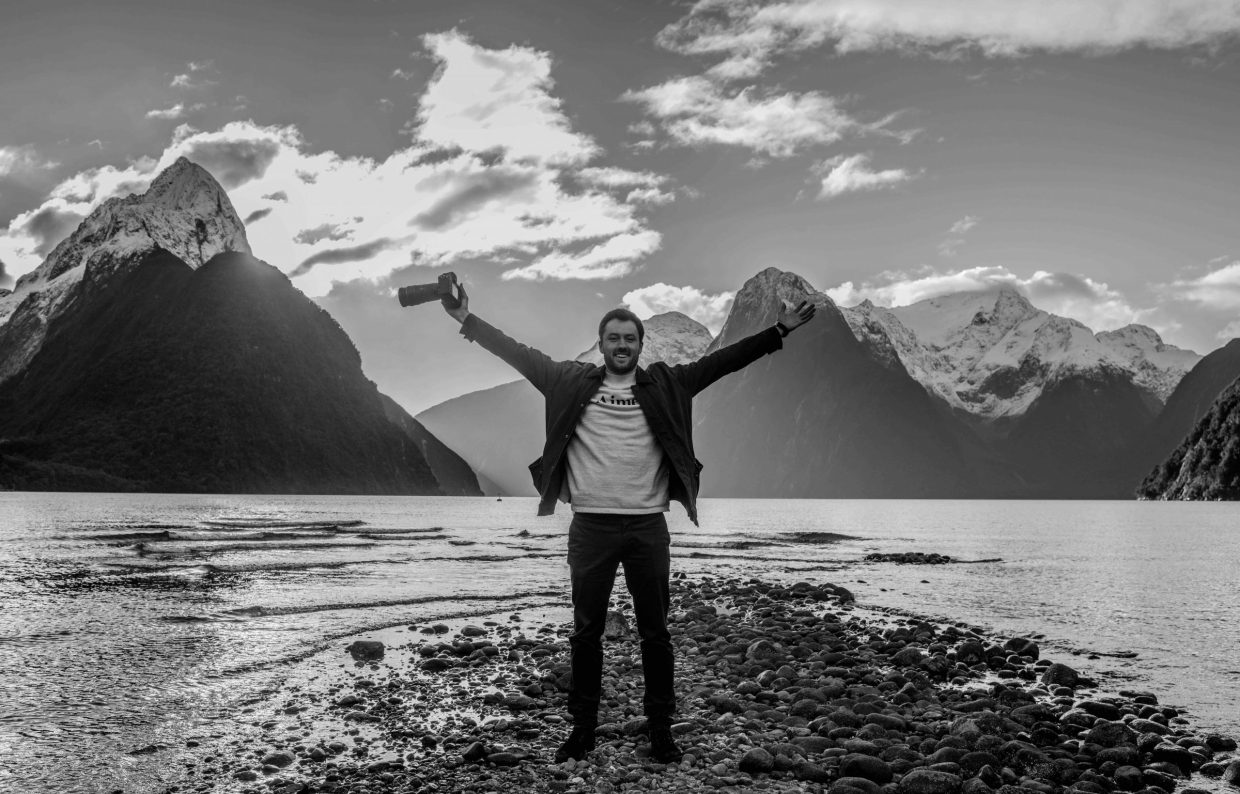 Alex from the DYP team enjoying the views of Milford Sound
Alex from the DYP team enjoying the views of Milford Sound
Auckland is a decent sized city by the sea and, as with Vancouver, there is a sizeable Asian population. A couple of days in the city allows reconciliation with one simple reality - Great Britain will never beat New Zealand in the sailing game. In the UK, yachting is a minority sport that gets a little press coverage around Sir Ben Ainslie during the Olympics or The America’s Cup. Despite the admirable efforts of Land Rover and others to raise awareness, it is simply not part of our culture.
In Auckland, catamarans are not a sporting luxury, they are a commuting alternative. Sailing terminology is incorporated into daily conversation in the same way Brits use football metaphors. There are many things New Zealanders don't do well - R&B music and broad ranged conversation are two that spring readily to mind. But when they are good at something they kill it - like sailing and butter. And their butter - which could be called anything - is of course called “Anchor”. They are blatantly mocking us and it seems sensible for Britain to give up on both sailing and dairy products and say to our Kiwi friends “you win”. It would leave so much more time for us to focus on things we are good at and win at - like irony and fashion.
Much of New Zealand is entirely provincial. It really is cut off from the world like no other country I know - and it is still ranked 53rd by GDP in the world - one above Iraq. But no need for an army or navy down here and there are very few bad people to arrest or lock up. No wonder taxes are so low. Unless Peter Jackson’s work is fact not fiction, and there is indeed a fire breathing dragon hanging around Milford Sound, New Zealand is the safest, most peaceful place on earth.
But that is part of the problem. It is just a little too pleasant. A good investigative journalist must leave New Zealand to get work - there is just very little drama going on. Newspapers talk of kitchen improvements and visiting hour extensions at old people's homes and enthusiastic cabbies will chat about the history of most roundabouts.

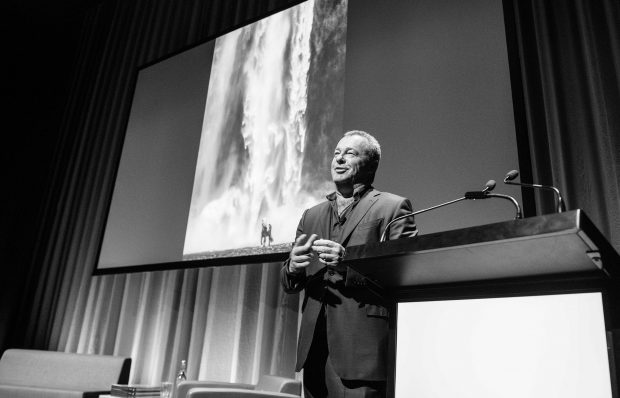
The more we became used to the banal trivia from the drivers, the more we totally fell in love with it. Journeys would be extended so that we could learn that an office block was originally four floors high, but became over crowded, so they added a couple more floors. We were digesting this bombshell for some time, before the driver helpfully added that it had reached six floors high. There is never a dull minute in a Kiwi cab - we would be in total hysterics and the more we laughed, the more they were encouraged to tell us more. “It’s good for gold”.
We met some remarkable and authentic people in New Zealand - entrepreneurs and investors that have bucked the trend and are original thinkers. The business day starts first every day in New Zealand and some take on the challenge to always be ahead. The country is a good test market for a brand - it is wealthy, but small and logistically challenging. A brand that starts here and succeeds must have every chance elsewhere. To stand out in New Zealand is not normal - the tall poppy syndrome is very much in play, but I suspect that those that do - whether they be in the arts, hospitality, tech, consumer brands or vanilla seed capital investing - are very much worth keeping an eye on.
I need to have creative courage to succeed and I am inspired by others that share this quest. It would be very one dimensional if they were all based in California and that is why I will always want to meet artists and visionaries in far out places like Iceland, Greenland or New Zealand. They tell stories of the last frontier and I am first and foremost a story teller about final frontiers.
We teamed up with WildArk as our charity in New Zealand. This smart NGO is run by the Australians Mark and Sophie Hutchinson and the Aussie Superstars Dave Pocock and Mick Fanning are ambassadors. They also invited me to join the ambassadorial team as a lone Scot and in accepting I promised to do all I could to raise awareness of their mission and more importantly raise money to help their efforts. There is of course a neighbourly rivalry between New Zealand and Australia and on the rugby pitch, Dave was central to it. But it is not a rivalry that extends to conservation. This is a higher playing field and unites all.
WildArk’s mission is to secure parts of identified green belts around the world to protect the rich biodiversity of these areas as a way of conserving wildlife while creating research and experience opportunities for people to reconnect with nature and then become inspired to protect it. As a result of our trip to New Zealand, $34,000 is on its way to help them with their efforts in Zambia - a country that I will be working in next week.
Footnote - The image below is one of my few worthy landscape shots - copies of the print will be available.
